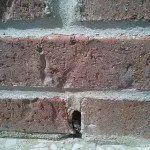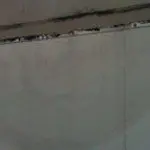16 Sep 2013
Chicago Tuckpointing Done Right

This recent review from Angie’s list reminds me that when it comes to Chicago tuckpointing jobs, little things do matter. Since not everyone has access to access to Angie’s List, I thought I would share it:
“Quote was received within two days of phone call for an estimate. Agreed to job and scheduled time for work to be completed within a week. Workman arrived at 7:30 and began setting up. Four workers including the owner, Mr. Gallagher. They were courteous and proceeded to start working right away. Covered perennials. Worked at a consistent pace taking one break during the four hours they were at my home. Tuckpointing looks great so far. Very neat, filled in all cracks in mortar especially around the chimney. Mr. Gallagher even tuckpointed areas on garage at no extra cost. Quote was almost 50% less than another company quoted for less work. Will be calling next year for additional work.”
Grade A.
Thank you to all of our customers who have shared our good work their friends and family. We really appreciate it.
Read more reviews.
31 Jul 2013
How We Make a Custom Chimney Crown
If you want to know how we create a new chimney crown you will want to watch this video.
The homeowner in Barrington Hills, Ill., didn’t really think about the chimney until they noticed leaking on the inside of the fireplace. A closer look revealed a deteriorated chimney cap. The original chimney was faulty—it did not have a proper overhang. This allowed water to work its way down inside the chimney, causing substantial damage to the chimney cap as well as the surrounding brick on the fireplace.
We created a new custom-fit chimney crown out of concrete. The first step was to construct the wooden forms around the top of the brick fireplace. When secure, workers then poured the concrete. Metal rebar ensures that the concrete has a secure hold to the fireplace. A lip on the concrete keeps water flowing in the right direction – away from the fireplace.
Once we had the chimney crown securely in place, mortar joints on the fireplace were ground out to ensure a good bond with the new mortar. Damaged bricks were replaced and the entire chimney was tuckpointed. The final result is a chimney that looks brand new and will last another 2o years.
Even if your home is newer, improper installation of chimney caps can quickly deteriorate your brick. Make it a habit to check your chimney every few years for signs of deterioration. Efflorescence, cracks in the chimney crown and chipped mortar are a few of the signs to look for.
Questions about your fireplace? Give us a call at 708 388 2871.
24 May 2013
No Weep Holes and Other Chicago Masonry Problems

Weep holes like this allow moisture to escape the brick, preventing mold and other moisture problems.
If you see a hole or holes along the bottom of a brick wall, don’t worry. They are most likely weep holes, and there is a reason for them to be there. If they aren’t there, you have reason for concern. Weep holes ventilate the narrow cavity between the brick and the interior wall. Without weep holes, moisture that wicks through the brick and mortar will soak into the framing and drywall, making them magnets for termites and mold. But any water that comes in through the weeps will hit metal flashing, if the inside walls were built properly.
Most building inspectors will notice the problem. Other problems that frequently occur in Chicago masonry buildings are:
- Lack of flashing. Weep holes won’t work without it.
- Poor pointing. There should not be gaps in the mortar.
- Unpainted lintels over doors and windows. The steel lintels eventually will rust, causing expansion that will crack the adjoining block.
- Stone window sills that are level or sloped back toward the window, instead of sloping away from the window to keep the water out.
- Poorly sealed stress and expansion joints.
If you see any of these problems, call a trusted masonry contractor such as Shamrock Tuckpointing for an inspection. Left unattended small problems can escalate into major repairs.

Saturation Leaks
It may surprise you but masonry is not entirely waterproof. Brick does absorb water. When water passes through or absorbs entirely into the porous surface of a masonry wall to the extent that moisture finds its way into your living space it is called a saturation leak.
Saturation leaks don’t show up every time it rains. That’s because light rain won’t provide enough moisture for the masonry to become saturated and transfer completely through the wall.
Saturation leakage becomes a problem when the water shows up in some occupied or living environment, causing noticeable damage to ceilings, walls or floors. Staining is more often the sign of a saturation leak, rather than water drips or puddles on a floor. Efflorescence or a powdery white substance also appears with saturation leaks. If under wallpaper, efflorescence will give a bumpy like appearance. Paints will eventually blister and crack if efflorescence is present on the wall.
A common area where saturation leaks are found is where the chimney passes through the roof. However, whenever water can run down or moisture is held against a masonry wall (snow) there is a possibility for saturation leaks. Look for failed gutters or downspouts that may be streaming water onto the masonry.
Problem masonry areas can be treated with a water-repellant sealant that reduces the porosity of the masonry. Consult a tuckpointing or masonry professional to determine the right sealant for your building.
Void Leaks
Leaks caused by stress cracks, holes, or missing mortar can sometimes look similar to a saturate leak. Exterior walls should be inspected for problems that could cause or contribute to a saturate leak. It is not uncommon for leaks to have multiple causes. Unlike a saturation leak, void leaks usually occur almost every time it rains. Water streams are visible running down a wall or spread out from a center point of origin. These leaks are usually isolated to a single area.
Leak diagnosis is no easy task, but experienced masonry professionals can help identify problems and find solutions. Shamrock Tuckpointing can keep your Chicago masonry buildings free from leaks.
We’ve seen a number of moisture issues appearing on relatively new commercial shopping centers recently and the culprit has been failed caulking. It serves as an important reminder to building owners and property managers that while caulking is a small part of a structure, it plays an important role in keeping a building watertight. Both new and old buildings can be vulnerable to failed caulking.
The wrong caulking or improperly applied caulking is a major cause of moisture problems. Moisture stains are a sign that the caulking has failed. Look below windows or near the roof line. Windows and roofs are especially prone to water penetration. By conducting regular inspections and paying attention to minor repairs, building owners can avoid major repairs down the road.
Reasons for Caulking Failure
Sometimes shoddy construction can lead to a leaky facade. In the rush to finish a job or faced with inadequate supply, a contractor might use whatever caulking is on hand, rather than what was specified. Use of the wrong sealant with masonry and concrete can cause discoloration, stress on concrete or even spalling.
In other cases, joints that are too narrow or wide can cause the caulking to fail. If the joints are too narrow, the expansion of the substrate can cause the joints to close too much and extrude the sealant. Later when the building contracts, the caulking is no longer in the joint. If a joint is too wide (more than one or two inches, depending on the sealant), the sealant may sag out of it.
Misapplication may also be due to weather. Brick or masonry must be completely dry to get proper adhesion with caulking. Applying when moisture is present causes the sealant to lose viscosity. It is too thick to properly tool. Similarly, applying caulking when it’s too hot can cause the sealant to sag or even flow out of the joint.
At Shamrock Tuckpointing we take caulking seriously. With careful selection of the proper sealants for the job and application, we make your commercial building watertight.


